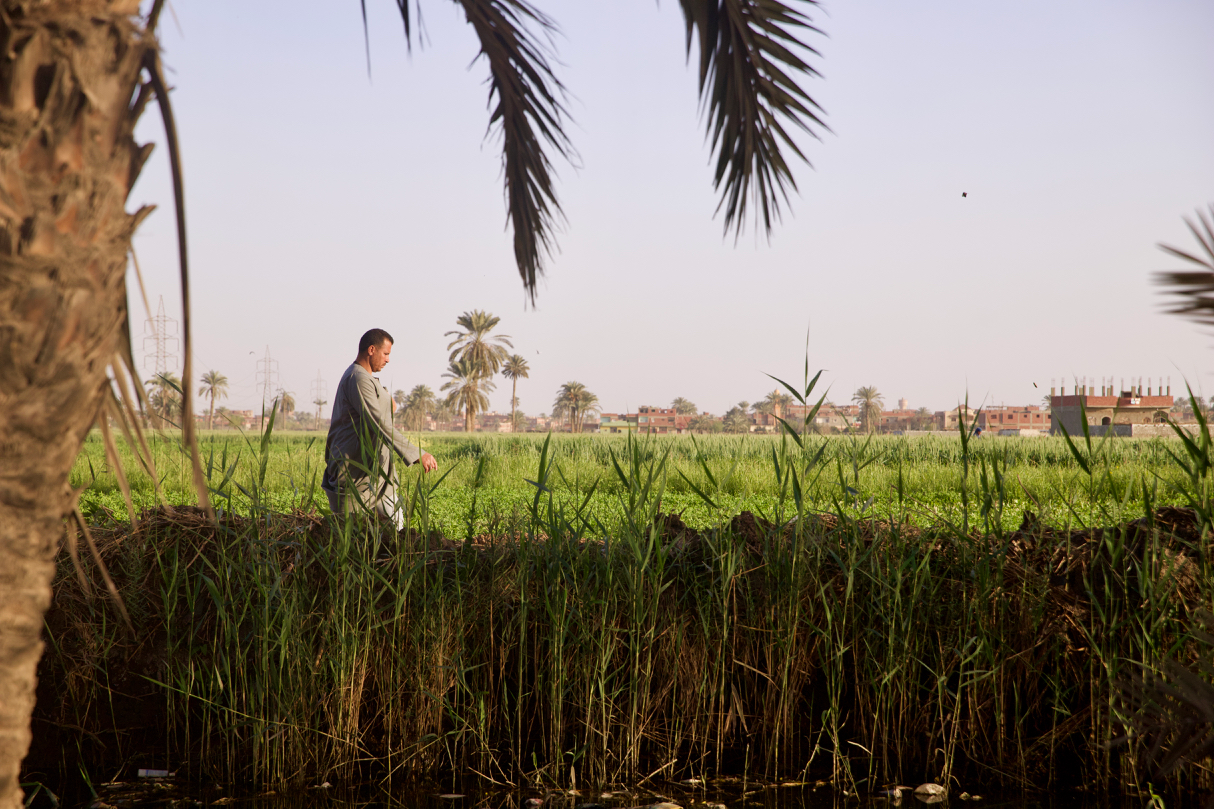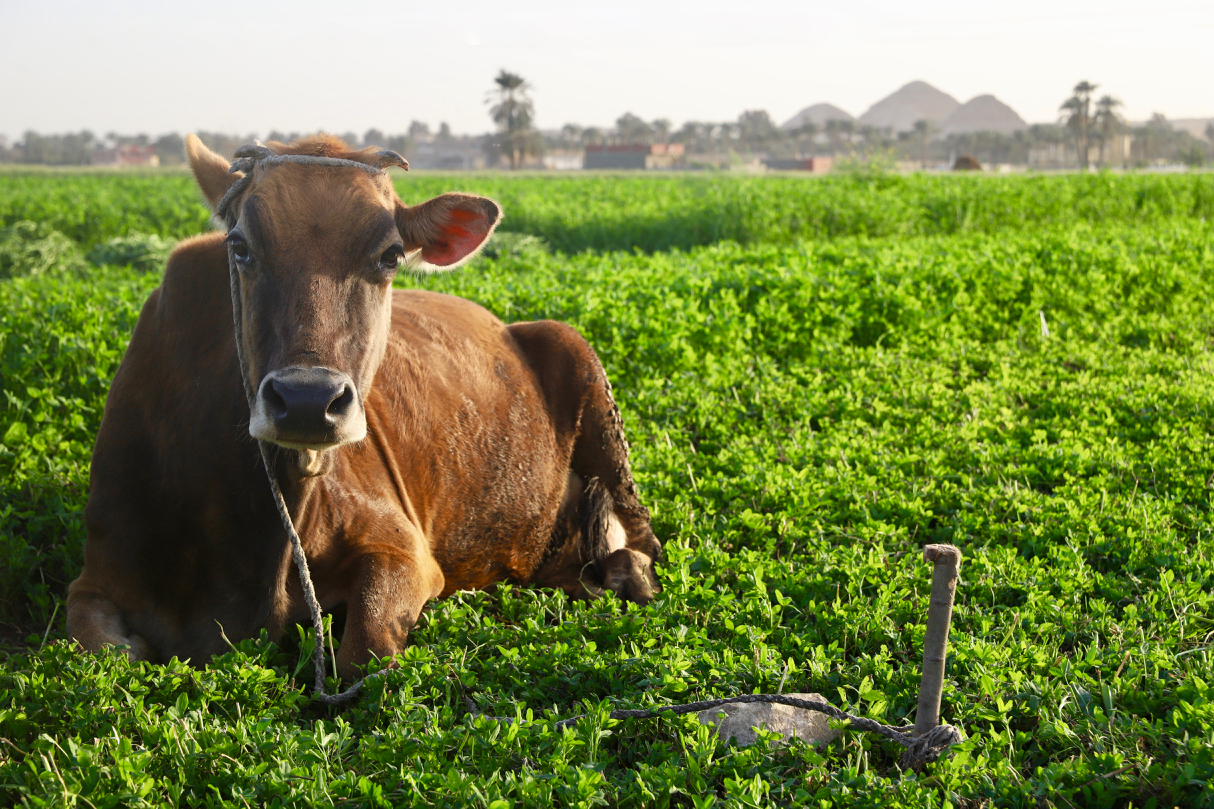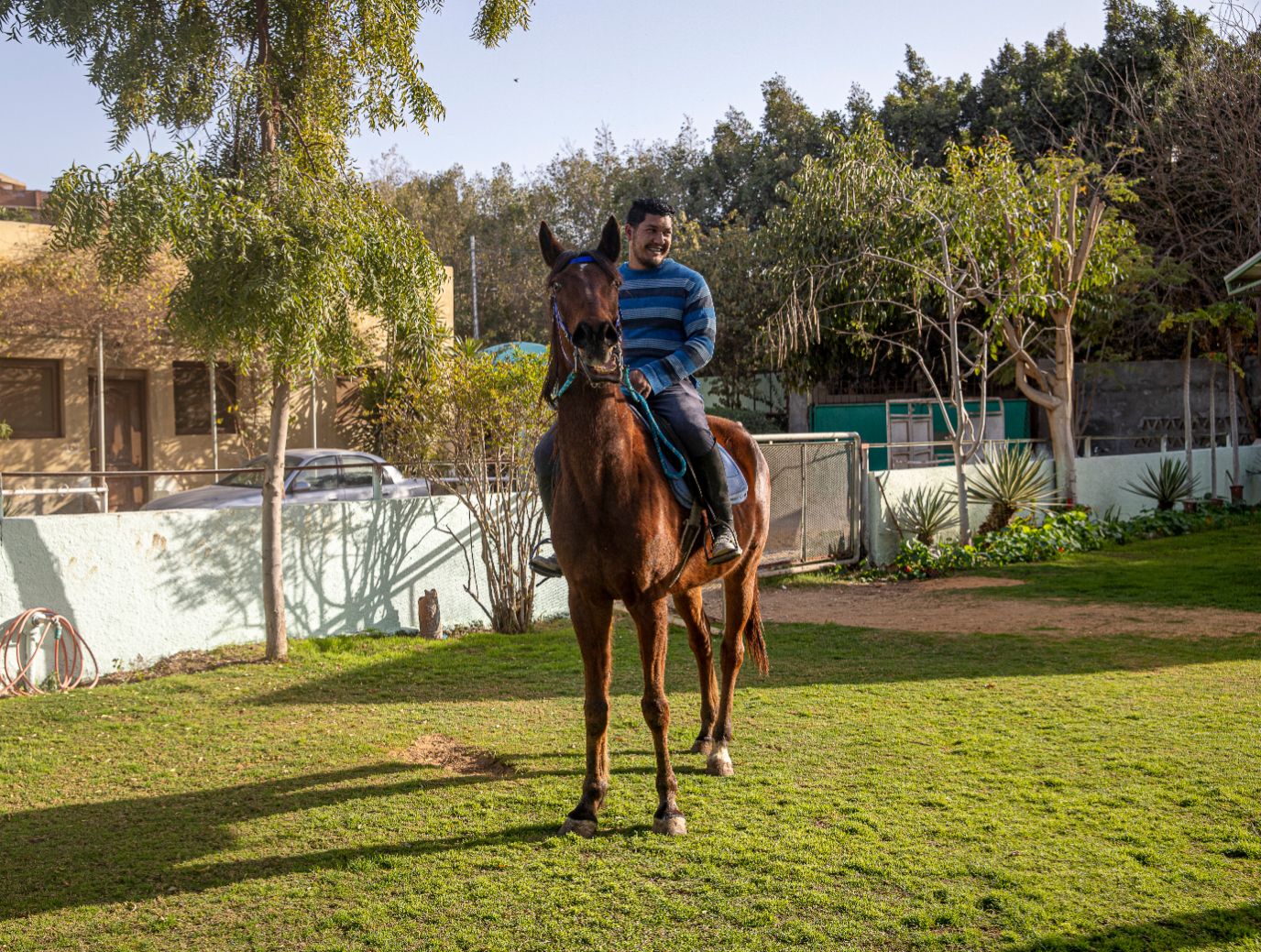A lesser-known archaeological site in Badrashin, Abu Sir served as one of the main elite cemeteries for the ancient Egyptian capital city of Memphis; a compact pyramid field of pyramids and funerary temples dating mainly from the 5th Dynasty of the Old Kingdom.
Modern-day Abu Sir’s village and surrounding agricultural fields maintain traditional practices of farming, livestock, and poultry farms, and have grown to become an epicenter for animal shelters and riding stables.
Pyramids & Sun Temple
The Abu Sir necropolis contains a total of 14 pyramids and served as a royal necropolis during the Fifth Dynasty. All of the major pyramids at Abu Sir were originally built as step pyramids, however, the Pyramid of Neferirkare was later filled in with loose stones to take the shape of later pyramids.
Although the pyramids and sun temple are closed to the public, there are several stables in the area that arrange rides in the desert to observe the sites from horseback.

Agricultural Tourism
The village and surrounding fields have high agricultural production. The most common crops in the area are alfafa, corn, wheat, and vegetables. The wheat harvest occurs in May, which would offer an opportunity to see farmers collecting and sorting in the fields. Maize harvest takes place in August and September.
Abu Sir’s farmers work the fields by hand mostly, with little machinery, giving visitors an insight to centuries-old planting, irrigation, and harvesting techniques. The countryside landscapes are home to numerous wild plants and trees which grow around fields and irrigation/drainage canals. Willow, sycamore, and mulberry trees line the canals, offering shade and respite during leisurely field walks.

Working Farms, Shelters & Stables
Abu Sir has dozens of locations to observe working farms, a volunteer with rescued animals, and interact with animals of all sorts. Due to the closeness of Abu Sir to Cairo’s main highways, it has become a natural hub for riding stables, animal shelters, and working farms for organic eggs, milk, and poultry.
This makes the area an ideal spot for families to visit for the day and reconnect with nature and animals, and perhaps do a weekly shop for essential groceries. There are several lodges offering freshly prepared rural meals, offering a space to stop and relax while the children run and play in spacious gardens. For the horse enthusiasts, a local guide may also be able to arrange a visit to one of the dozens of stables in the area breeding and raising pure Arabian horses.

Seasonal Highlights
Visiting Abu Sir’s stables, farms and shelters can happen all year around, although riding horses in the desert is better enjoyed outside of the hot summer months.
The agricultural landscapes and fieldwork can also be observed throughout the year, but some seasons offer a unique vantage point to visitors. The beauty of the countryside lies in its changing colors from season to season depending on the overturn of crops from growth to harvest. For example, palm trees do not come in a single shape or size, there are several varieties and the dates shift in color according to the time of year, displaying the richest of colors right before harvest.
How to Get There
Abu Sir can be reached easier by car/taxi, it takes approximately less than 1 hour from Central Cairo.
Distances:
It is a 25 km distance from Central Cairo to Abu Sir
It is a 15 km distance from Giza Pyramids to Abu Sir
Suggested Tours in Abu Sir